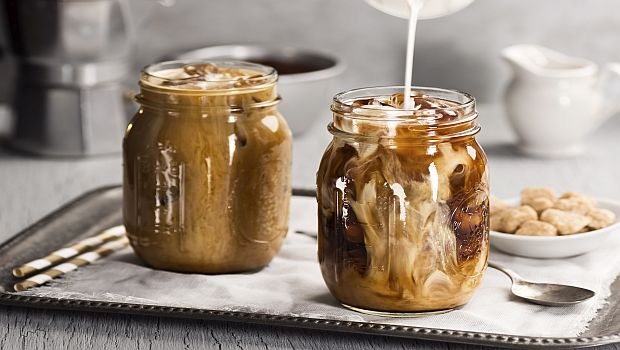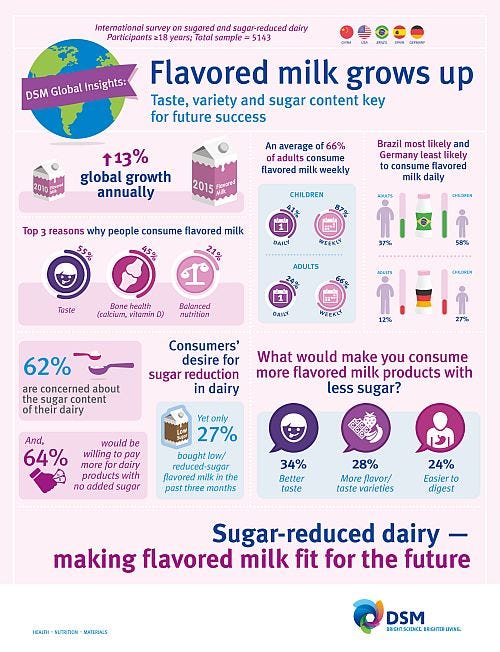Are you trying to reduce sugar content in your flavored milk products? DSM’s third Global Insight Series report focuses on sugar reduction in flavored milk. Based on an international consumer survey, the report zooms in on consumer preferences and trends, revealing flavored-milk consumption is soaring and is not limited to children alone, as adults are also embracing these dairy beverages. Better taste and more flavor varieties are important in further stimulating demand, as well as addressing concerns on the sugar content in their dairy products.
December 2, 2015

Are you trying to reduce sugar content in your flavored milk products? DSM’s third Global Insight Series report focuses on sugar reduction in flavored milk. Based on an international consumer survey, the report zooms in on consumer preferences and trends, revealing flavored-milk consumption is soaring and is not limited to children alone, as adults are also embracing these dairy beverages. Better taste and more flavor varieties are important in further stimulating demand, as well as addressing concerns on the sugar content in their dairy products.
DSM’s survey, conducted in the United States, China, Brazil, Spain and Germany, shows nearly one-fourth of adults (24 percent) and 41 percent of their children drink flavored milk daily. The year-on-year market growth between 2010 and 2015 was 13 percent, demonstrating the increased consumption of flavored-milk products.
The interesting development within the flavored-milk market is how adults are embracing it. They like chilled café latte-style drinks or post-work out dairy beverages, in which taste (55 percent) and bone health (41 percent) are the main attractions for flavored milk. In China, the functional benefits are more important, as 43 percent of participants see gastrointestinal (GI) health as the main driver.
The survey respondents also indicated they would increase their consumption in the next three years, 29 percent of adults and 50 percent of their children respectively. But six out of 10 consumers are concerned about the amount of sugar in dairy. Better taste (34 percent) and more flavor varieties (28 percent) are indicated most often as reasons to further increase consumption of sugar-reduced flavored milk beverages.
DSM’s findings support the notion that flavored milk is an ideal vehicle for creating healthy and nutritious dairy products for all ages and different lifestyles. Innovation can be driven by creating tastier products, bringing more varieties to the market which are lower in sugar.

You May Also Like




.png?width=800&auto=webp&quality=80&disable=upscale)